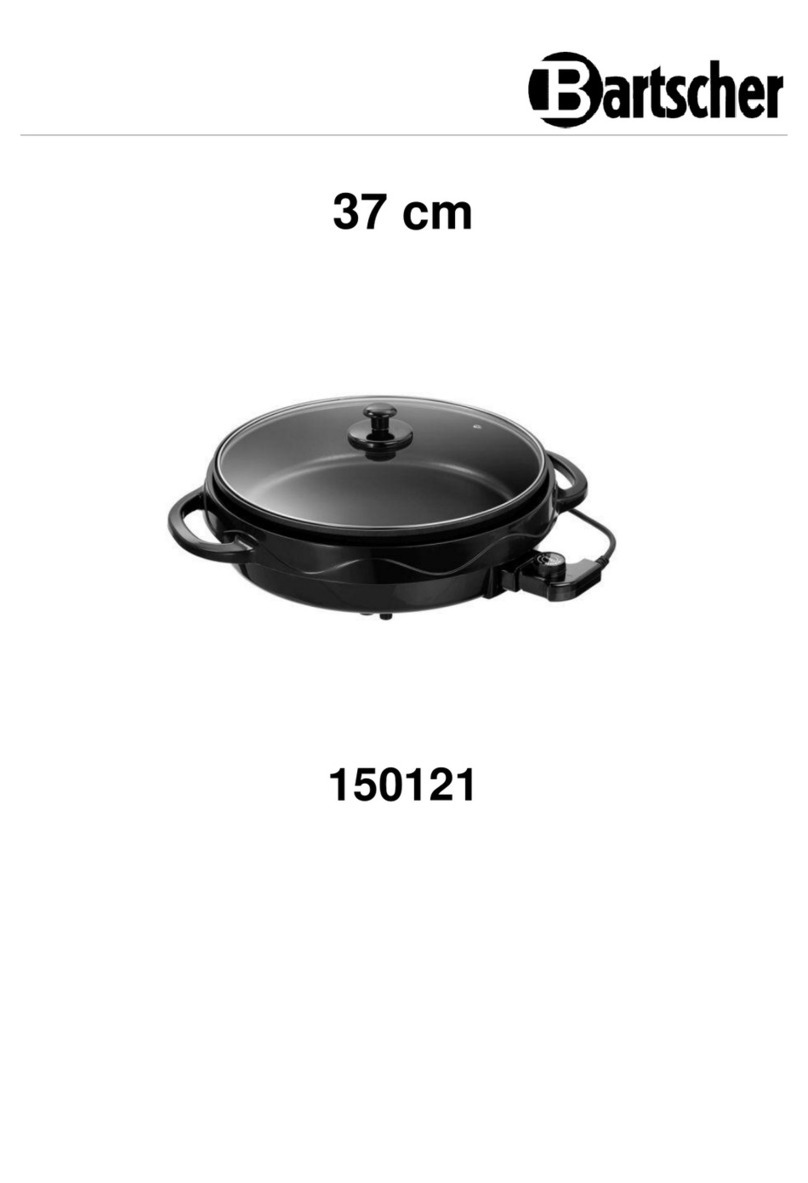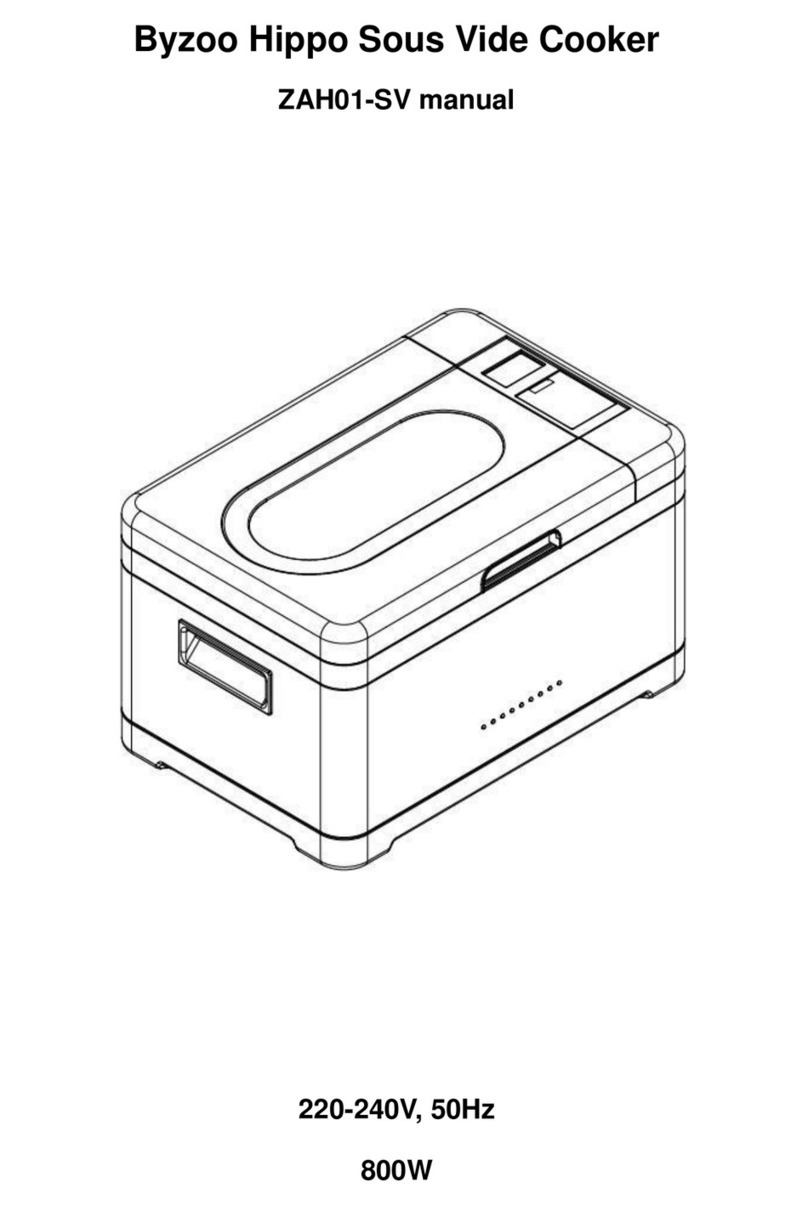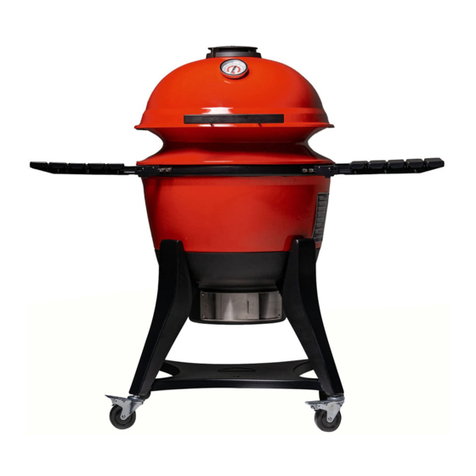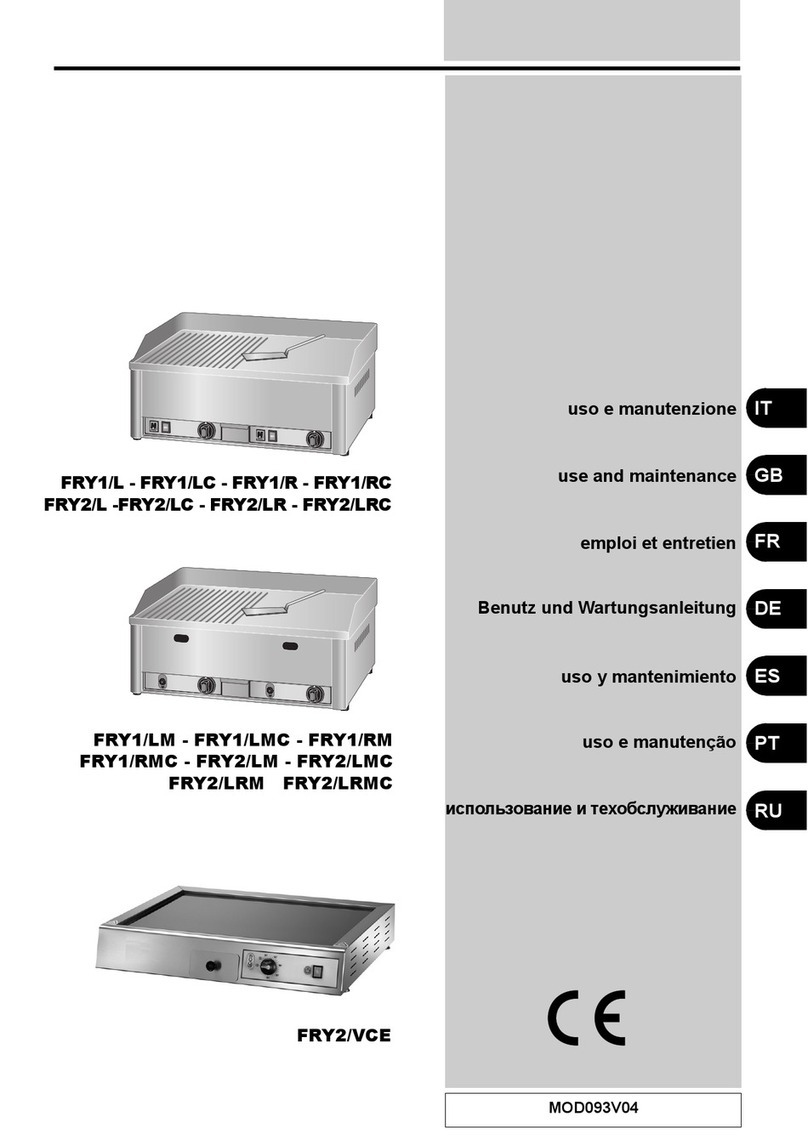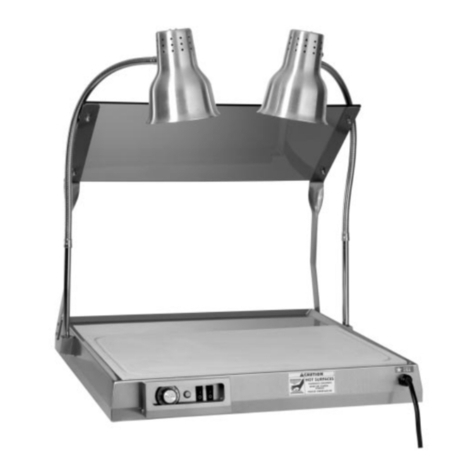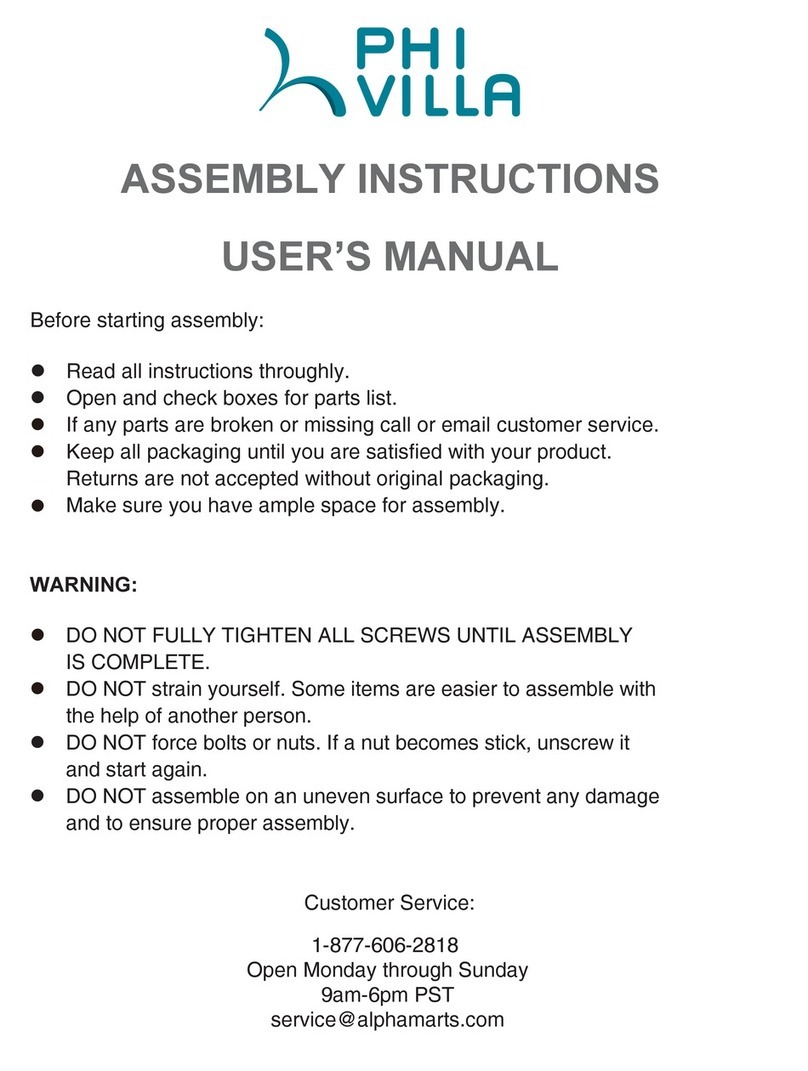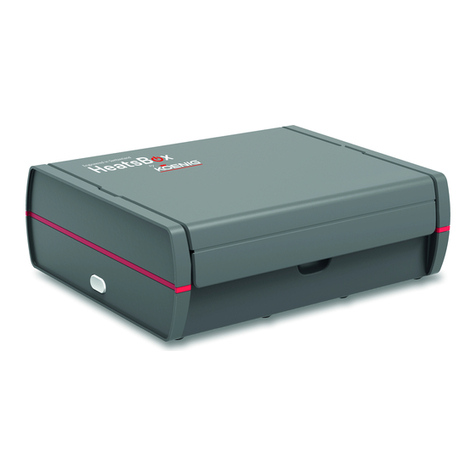FireBird Multifuel Range Cooker User manual

1
MULTIFUEL RANGE COOKER

2
benefit of heat ur INDEX
Page
1.0 INTRODUCTION 3
2.0 IMPORTANT SAFETY NOTES 3
3.0 TERMS & CONDITIONS OF WARRANTY 4
4.0 INSTALLATION INSTRUCTION
4.1 Performance 5
4.2 Specification 6
4.3 Health and Safety 7
4.4 Air Supply 9
4.5 Chimney/Flue 9
4.6 Installing Appliance 10
4.7 Heating and Hot Water System 11
4.8 System Controls 11
4.9 Checks before Lighting 11
4.10 Commissioning 11
4.11 CO Alarms 12
5.0 OPERATING INSTRUCTIONS
5.1 Fuels 13
5.2 Lighting and Controlling 13
5.2.1 Wood 14
5.2.2 Smokeless Fuel 14
5.2.3. Overnight Banking 14
5.3 Cooker Operation 16
5.3.1 Doors & Shelves 16
5.3.2 Thermostat 17
5.3.3 Cooking 17
5.4 Clearance of Ash 19
6.0 MAINTENANCE
6.1 Cleaning 19
6.2 Door Seals 20
6.3 When Not in Use 20
6.4 Chimney Clean 20
6.5 Chimney Fires 20
6.6 Fume Emission 21
6.7 Pipe Protection 21
6.8 Servicing 21
6.9 Spare Parts 21
7.0 TROUBLE SHOOTING 22
WARRANTY REGISTRATION

3
1.0 INTRODUCTION
We would like to thank you for purchasing a Firebird Mulitfuel range cooker. This
instruction manual is produced for the reference and guidance of qualified installation
engineers such as those who are OFTEC registered (Oil Firing Technical Association).
EU legislation governs the manufacture, operation and efficiency of all domestic
central heating oil cookers.
This instruction manual has been produced for the reference and guidance of qualified
installation technicians.
You should ensure that all installation, servicing and commissioning works are carried
out by a HETAS approved or competent, qualified engineer/installer. It should be
noted that it is the responsibility of the installer/householder to ensure that the range
cooker is properly commissioned. Failure to do so may invalidate the warranty.
2.0 IMPORTANT SAFETY NOTES
The term Multifuel refers to commercially available solid fuels such as wood,
smokeless coal and anthracite. The appliance shall not be used as an incinerator;
only recommended fuels shall be used. Non- recommended or liquid fuels should
never be used when lighting or filling the fire.
THIS RANGE COOKER SHOULD ONLY BE INSTALLED IN OPEN
VENTED SYSTEMS.
THE APPLIANCE IS HOT WHILE IN OPERATION AND REMAINS HOT
FOR A PERIOD AFTER USE. ENSURE THAT CHILDREN OR INFIRM
PERSONS ARE SUPERVISED AT ALL TIMES WHILE APPLIANCE IS HOT
UNTIL COOLED THOROUGHLY.
Do not store liquid fuels in the close proximity to the range cooker.
The range cooker is designed in such a way, that under normal burning conditions,
the fumes pass up through the chimney flue and do not escape into the home.
Please ensure that the flue system is checked regularly, that no cracks or openings
are evident and that the seals on the range cooker are in good condition.
This appliance is designed and tested in accordance with manufacturing standards.
No modifications to the appliance must be carried out.
ENSURE THAT ALL COOKER COMPONENTS ARE IN PLACE BEFORE
LIGHTING.
THE RANGE COOKER DOOR SHOULD NOT BE KEPT OPEN WHEN THE
FIRE IS LIT/ BURNING.
The range cooker should never be over stocked/over filled. The draught settings
should be reduced if this occurs.
A mechanical air supply should never be added to the range cooker.
The range cooker reaches high temperatures and can be hot to touch. Ensure that
safety guards (in accordance with BS8423:2002) are in place.
Do not place any furniture or combustible material within 800mm of the range
cooker.
Please ensure that operating tools be used where provided. The range cooker
becomes very hot during operation and should not be touched by bare hands.

4
Ensure that BS 8303, Code of Practice for installation of domestic heating and
cooking appliances burning solid mineral fuel, is adhered to at all times.
Aerosols must not be sprayed neat the appliance while alight.
Ensure the following codes and standards are adhered to;
-BS EN 15287 –1:2007 Design, installation and commissioning of chimneys
-BS EN 14336:2004 Heating Systems in Buildings.
-Installation and commissioning of water based heating systems
-BS EN 12828:2003 Heating systems in buildings
-Design of water based heating systems
-BS EN 12831:2003 Heating systems in Buildings
-Method of calculation of the design heat load.
Please read this manual carefully prior to installation of the range cooker.
Installation of the range cooker must conform to Building Regulations at all times.
3.0 TERMS & CONDITIONS OF WARRANTY
This Firebird product is designed and manufactured to give many years of
trouble-free service. We provide a comprehensive warranty of 5 years on the
range cooker shell and to year warranty on all other parts from date of
installation.
The warranty will only apply if the range cooker is installed by a HETAS
approved or a competent, qualified engineer/installer and is serviced annually
thereafter.
The following terms, laid out in the warranty must be adhered to:
(a) All claims under the warranty must be received within 5 years from the
date of installation.
(b) The range cooker must be installed and commissioned by a HETAS
approved or competent, qualified engineer/installer and as set out in this
instruction manual.
(c) Maintenance should be carried out at the intervals outlined in this manual.
(d) Installation of the range cooker must be in accordance with this manual
and all relevant standards and codes of practice. All local regulations,
including those referring to national and European standards need to be
complied with when installing the appliance
(e) Firebird can accept no liability in respect of any defect arising from
incorrect installation, negligence, fair wear and tear, misuse, alteration or
repair by unqualified persons.
(f) The warranty extends to reasonable labour costs except under clause (a),
where any valid claim made after 3 years will not include labour costs.
(g) Firebird’s prior authorisation must be obtained before examination or
repair of the range cooker takes place.
(h) Firebird will examine all claims made under the warranty and for any
claims deemed invalid, costs incurred will be borne by the householder.
(i) The range cooker must be used for domestic heating purposes only.
(j) Any defective part removed under any or all of the warrantees MUST be
returned to Firebird.
THE STATUTORY RIGHTS OF THE HOUSEHOLDER ARE NOT AFFECTED
BY THIS WARRANTY

5
4.0 INSTALLATION INSTRUCTION
4.1 PERFORMANCE
The following highlights the output and test performance of the range cooker:
Firebird Multifuel Range Cooker
Fuel Type
Wood
Ancit
Ancit
Output to Water - kW
11.1
15.4
11.5
Output to Space - kW
3.7
3.9
1.0
Efficiency - %
74.0
78.4
79.5
CO (@13% O2)
0.44
0.12
0.21
Mean Flue Gas Temp oC
302
305
252
Flue gas mass flow (g/s)
13.4
13.2
10.6
BS Standard
BS EN 13229:2001 + A1:2004
Test Type
Intermittent
Intermittent
Continuous
Minimum safe distance from combustible materials: To rear 135mm and
sides 0mm
Unit Weight Empty –480kg
Water Content –65 litres
Maximum boiler operating pressure –3 bar
The appliance is capable of intermittent operation when burning wood logs and both
intermittent and continuous operation when burning smokeless fuel.
Heat outputs and efficiencies at intermittent operation are based on heat over a one
hour period, using wood logs or Ancit solid fuel. The heat outputs and efficiency at
continuous operation are based on heat over a three hour period, using Ancit solid fuel.
Results were obtained by independent testing to BS Standard EN 12815.

6
4.2 SPECIFICATION

7
4.3 HEALTH AND SAFETY
When installing the range cooker, please ensure that the following Health & Safety
Regulations are met:
UK - Health and Safety at work Act 1974.
IRL - Safety, Health and Welfare at Work Act 2005, (Construction Regulations
2006).
Installation, commissioning and/or servicing should only be carried out by a HETAS
approved or competent, qualified engineer/installer.
The installation of any electrical services during the installation of this boiler and the
associated heating system must be carried out by a registered competent electrician
and in accordance with the requirements of the latest issue of BS 7671.
The small amounts of adhesives and sealants used in the manufacture of this
appliance are cured and do not present any known hazards when used for their
intended purpose.
NOTE: If your Firebird Range cooker is not installed, operated & maintained
properly a house fire may result!
ADDITIONAL MATERIAL SAFETY ITEMS
Handling - Adequate facilities must be available for loading, unloading and site
handling.
Fire Cement - Some types of fire cement are caustic and should not be allowed to
come into contact with the skin. In case of contact wash immediately with plenty of
water.
Asbestos - This product contains no asbestos. If there is a possibility of disturbing any
asbestos in the course of installation then please seek specialist guidance and use
appropriate protective equipment.
Metal Parts - When installing or servicing this cooker, care should be taken to avoid
the possibility of personal injury.
FIRE SAFETY
Cooking is the biggest cause of house fires.
Fires start when your attention stops.
Precautions
Install a fire alarm in your kitchen.
Keep the oven, top plate and pans clean.
Safe Frying
The safest way to avoid a fire when cooking with hot oil is either:
To use a thermostat controlled electric deep fat fryer;
or switch to oven cooking.

8
If you do use a chip pan:
Turn the handle to the side so that oil does not spill accidentally.
Don’t fill the pan more than one third full of fat or oil.
Make sure the chips are dry before putting them in the hot oil/fat.
Ensure the oil is not too hot, by first testing with one chip.
Don’t ever leave a pan on the heat unattended.
Never deep fat fry when you have been drinking alcohol or taking medication
that makes you drowsy.
IF OIL CATCHES FIRE WHILE COOKING:
and the fire is well established:
Get out of the house.
Close all doors behind you
Dial 999.
Do not try to move the pan.
Do not throw water on the fire, as it will react violently with hot oil/fat.
and the fire is in the early stages and it is safe to do so:
Turn off the heat.
Get everyone out of the house & stay out
Close all doors behind you.
Dial 999.
Do not try to move the pan.
Do not throw water on the fire, as it will react violently with hot oil/fat.

9
4.4 AIR SUPPLY
It is essential that you provide an adequate air supply for safe and efficient operation
of your range cooker.
The air supply will ensure efficient combustion. Failure to do so could result in smoke
filling into the room.
Air Requirements
A permanent air entry opening or openings, with a total free area of at
least 550mm2per kW of rated output above 5kW, shall be provided. Under no
circumstances should this be less than 6500mm2.
If a flue draught stabiliser is fitted, then the first 5kW of rated output is 300mm2per
kW and the balance of the rated output is 850mm2per kW.
“For newer build properties the requirements may need to be higher if the design
permeability of the home is less than 5m3/h.m2”. Approved Document J of the
building regulations gives more details.
NOTE: No extractor fan should be fitted in the same room as this appliance.
4.5 CHIMNEY/FLUE
In order for the appliance to have sufficient draw to perform satisfactorily, a height of
no less than 4.5 meters, vertically from the top of the appliance to the top of the
chimney, is required. Alternatively, chimney design with sufficient draught can be
calculated, in accordance with EN13384-1. A minimum clearance of 1m above any
obstruction, within a 7.6m radius should be achieved, if down draughts are to be
avoided.
Where a standard chimney is not available, a flue type of twin wall, fully insulated,
may be used. The inner diameter is to be a minimum of 6” and must terminate no
lower than the main ridge or adjacent outside obstructions. Cleaning access must be
provided on such types of flues.
The existing chimney must be checked before installing the appliance. It must be
sound, free from cracks and blockages and swept clean. It should not have an
excessive cross sectional area greater than 250mm x 250mm square or equivalent area.
Minimum inner diameter of 150mm to 200mm is required.
The chimney and connecting flue pipe must have a minimum diameter of 150mm and
its dimension should not narrow to less that the size of the outlet socket of the stove at
any point.
Do not connect the range cooker to a chimney flue which is connected to another
appliance.
It is essential that you use only stainless steel flue pipe for your range cooker and that
all installations are carried out in accordance with building regulations and
manufacturer’s instructions. Always fit pipes with the narrow side down, to allow any
creosote to run down the inside of the pipe. This avoids possible fire risk.

10
Firebird recommend that a thorough inspection of the chimney is carried out prior to
installation and on a regular basis thereafter.
The chimney should be of sound construction, free from debris, capable of
withstanding extremely high temperatures and have no evidence of cracks or other
faults.
Best installation practice is to install a flue lining suitable for solid fuels. A rigid
connection adaptor should be used to connect the flue liner to the range cooker.
Pipe bends should be kept to a minimum and there should be no more than two 45˚
bends on any installation within a chimney. Flues should not pass through ceilings,
floors or any form of combustible walls without adequate, approved insulation having
been installed, to protect the combustible material.
4.6 INSTALLING THE APPLIANCE
The appliance must be installed on a solid base that can take the weight and is of a
non-combustible material.
1. Remove the range cooker from its packaging and inspect for any damage.
2. Ensure the ground is level. The hearth should be strong enough to support the
weight of the cooker. If a hearth is not installed then a solid concrete slab is
required.
3. Fit the appliance into the opening, making sure it is central.
4. Make the connections to the boiler and ensure the primary flow pipe rises
from the boiler to so that no air is trapped in the boiler.
5. Draining taps must be located in accessible positions which permit the
draining of the whole system, including the appliance and hot water storage
vessel. Draining taps should be at least 1/2in. (12.5mm) BSP nominal size and
be in accordance with BS 2879.
6. Fill the system with water and check the boiler connections for leaks. Ensure
that the materials used for back filling are non-combustible.
7. An expansion pipe must be fitted to the range cooker water outlet pipe, which
must be vented to atmosphere, above the height of the header tank. There
should not be any valves between the range cooker and the vent pipe outlet
and it must not be possible to obstruct the outlet in anyway.
8. Fit the flue connecter to the top of the appliance so that it is central to the
chimney. Ensure that the flue manufacturer’s instructions are adhered to at all
times.
9. All voids must be filled and the flue pipe flaunched into the chimney, so that
no soot can collect when sweeping the chimney.
10. Make good the holes in the front and side of the chimney breast, ensuring they
are airtight. Remove any material from inside the appliance and check the flue
pipe is clear.

11
4.7 HEATING AND HOT WATER SYSTEM
The central heating system must comply with BS5449 part 1.
The hot water cylinder must be indirect and should comply with BS1566 part 1. The
system must be open vented and the header tank should not be more than 12 meters
above the boiler.
It is necessary to ensure that this solid fuel appliance is installed on an un-valved
route from the solid fuel appliance to an open vent on the system.
In case of pump failure or a power cut, the system should be able to work on gravity
to the hot water cylinder. In addition, the fire should be quenched, using best practice.
Dumping of hot water (i.e. running hot water taps) may be required.
Best installation practice is to install a heat leak radiator on the gravity circuit to the
cylinder/expansion tank. This heat leak radiator dissipates heat from the solid fuel
appliance in times of slumbering, excessive heat from the appliance or ‘power down’
occurrences.
The heat leak radiator should be sized at 10% of the solid fuel appliance output.
4.8 SYSTEM CONTROLS
The system pump may not be controlled by time switches. Range cooker can be
controlled with pipe thermostat. Ensure that all controls are installed to building
regulations.
Radiators can be fitted with thermostatic or manual valves. Please note: no valves
must be fitted to radiators where they act as the heat leak.
4.9 CHECKS BEFORE LIGHTING A FIRE
The following checks should be carried out prior to lighting a fire in the range cooker:
1. All components are in place.
2. The flue is clear of obstacles and a flue draught test has been undertaken/confirmed
3. The system is full with water and vented.
4. Has a suitable inhibitor been added?
5. Ensure the correct operation of the thermostat is carried out before using the
appliance. To carry out a check please turn the thermostat control dial to minimum
(0), to ensure that the closure plate sits flush against the stove body. If it doesn’t, it
can be further tightened with a crosshead screwdriver. Once a satisfactory closure is
achieved, the control arm can then be opened ready for use.
4.10 COMMISSIONING
Light the fire and check all joints and seals. Ensure that fumes and smoke are being
taken up the chimney and no fumes are entering the room. Carry out appropriate flue
draught test. Install a cowl or stabiliser if required. Note that flue should be capable of
a continuous negative pressure of 0.6 and 0.10” WG. Ensure that the door is not
opened too frequently as it is essential fire ignites to adequate level.

12
The heating system should be balanced in accordance with best plumbing practice.
The return temperature to the boiler must be maintained at 40oC so as to avoid
condensation of the boiler or return pipework. A by-pass may be required should
adequate return temperatures not be achieved.
Before completing the commissioning, the householder should be advised as to the
operation of the range cooker and the heating controls.
The instruction manual should remain with the householder.
4.11 CO ALARMS
Building Regulations require that whenever a new or replacement fixed multifuel
wood/biomass appliance is installed in a dwelling, a carbon monoxide alarm must be
fitted in the same room as the appliance. Further guidance on the installation of the
carbon monoxide alarm is available in BS EN 50292:2002 and from the alarm
manufacturer’s instructions. Provision of an alarm must not be considered a substitute
for either installing the appliance correctly or ensuring regular servicing and
maintenance of the appliance and chimney system.

13
5.0 OPERATING INSTRUCTIONS
5.1 FUELS
HETAS Ltd. approval covers the burning of the following smokeless fuels in this
range cooker:
Ancit (smokeless coal)
Anthracite Large Nuts.
Centurion.
Cosycoke.
Maxibrite.
Phurnacite.
Sunbrite Doubles.
Welsh Dry Steam Coal (large nuts).
The above fuels are all suitable for smoke control areas.
NOTE: Petroleum coke should never be used on this appliance. If used, it will
invalidate the guarantee.
Wood can be used in this appliance.
The two main factors to be considered when burning wood are the moisture content
and the density.
Moisture in wood will have an effect on the CV (amount of heat per unit volume), as
any moisture in the wood has to be boiled away before the wood will burn.
It can also create smoke and tars which could be corrosive and increase the risk of a
chimney fire.
Well-seasoned logs can have approximately twice the CV of unseasoned green logs.
Hard wood logs are denser than soft wood logs and tend to burn for a longer period of
time. Air dried wood should be seasoned for at least 12 months, before burning.
Wood that has been contaminated or treated with varnish, paint or other coatings and
preservatives should not be used. Not only does it release noxious chemicals into the
air, but it can also contribute to the amount of tar and deposits building up in your
chimney.
5.2 LIGHTING AND CONTROLLING THE FIRE
To light a fire place firelighters, kindling and smokeless coal, in this order, into the
firebox, as per standard practice and ignite. Ensure the primary damper is fully
opened. Once ignited close the door to a suitable setting (please refer to wood and
smokeless fuel settings on the next page). Fuel must be added to the firebox as
required. This is dependent on the fuel type being used and also the system it is

14
connected to. It is important you get to know you appliance and quantity of fuel
required.
The room should be kept well ventilated on the first lighting, as there may be an
odour and some smoke may be released. This is just the paint reacting to the heat and
will only last for a short time.
Ensure the doors on the range cooker are kept closed at all times. This ensures
minimum fumes spilling into the room.
NOTE: You should never over stock/over fill your range cooker.
Refuelling
Refuel the appliance when there is still a good bed of glowing embers. The primary
damper should be closed and the door should be opened slowly as this will assist in
preventing back draught into the room.
This solid fuel appliance has a tapered grate. Do not over-stock the appliance above
the height of the grate.
The type and quality of fuel will determine the time intervals for refuelling this
appliance.
Primary and Secondary Air
The appliance has two air setting controls, namely primary and secondary. Please
refer to image below for location of these controls. Both controls have settings in the
range of 1 to 5. Setting 1 being the lowest; setting 5 being the fastest.
5.2.1 WOOD
If burning wood only shut off the primary air. The secondary air can be adjusted from
settings 1 to 5. Setting 1 being the slow setting for burning. Setting 5 is the fast setting
for burning.
5.2.2 SMOKELESS FUEL
It is necessary to ensure that good quality coal is used at all times. When burning coal,
set the secondary to 1 and use the primary as the main controller. The thermostat
operates accordingly and maintains temperature in the oven.
5.2.3 OVERNIGHT BANKING
Smokeless Fuel
The appliance is designed for continuous slumbering overnight for 12 hours or more.
Last thing at night, de-ash the fire, empty the ash pan and fully refuel with smokeless
fuel.
Ensure that the firebox and ash pit door are securely closed, set the primary and
secondary air control to as noted above in section 5.3.3. Set the thermostat to No. 1.

15
NOTE:The precise amount of opening depends on local conditions such as the
chimney draught and the fuel being used.
It may take a few days to obtain the correct procedure for your installation.
1. If the fuel in the firebox is exhausted prematurely, the thermostat setting is too high
and should be reduced.
2. If the fuel does not burn but ‘dies out’, the thermostat setting should be increased.
Following overnight banking, the fire should be de-ashed, refuelled and the air
controls set to maximum to revive the fire. The controls can then be set to the desired
positions.

16
5.3 COOKER OPERATION
Warning! Hot Surface!!
The working surfaces on this cooker can reach HIGH TEMPERATURES
always ensure that the appropriate safety guards are in place where
children or infirm people are in the area.
5.3.1 DOORS AND SHELVES
To Open Doors
Lift the door upwards and
outwards to release from latch.
To Move Shelves
Lift the shelf up to release it
from its locating pin and then
pull it out of the chamber.
OVEN GLOVES must be worn
while handling the hot shelf.
Locating Pin.

17
5.3.2 THERMOSTAT
Primary/Secondary Air Control Thermostat
The air supply to the fire is controlled by a thermostat probe. This has 8
settings which control the heat; 0 will close the thermostat, 3 is normal burning rate
and 5 gives max output to central heating and hot water.
The thermostat will close when the water reaches temperature in the system.
5.3.3 COOKING
Use of Hot Plate
The best results can be obtained by using machined base cookware. The hottest hot
plate is located immediately above the fire, the other end being for simmering.
The circular plug in the hot plate (in the centre of the hot plate) is for flue cleaning
and must not be removed for cooking.
Keep the hot plate clean with a wire brush.
NOTE: To obtain optimum hot plate performance for fast boiling or hotplate
cooking, fuel the firebox to the bottom edge of the firebox aperture to a
horizontal level.
WARNING: the cooker top plate surface around the hot plate will become hot
under use and care must be observed. Please note that the minimum safe
distance from combustible materials must be: rear 135mm and sides 0mm.
Use of the top roasting oven
The correct adjustment of the spin wheel and flue chamber damper to obtain the oven
temperature required varies with the chimney draught, and can be found only by
becoming familiar with your appliance.
The following is a suggested method only, and may need modification to suit local
conditions.

18
Suppose an oven temperature for roasting is desired, and that the cooker is idling.
Thoroughly de-ash the fire as described in the respective paragraph, and re-fuel the
appliance. For burning wood in the appliance; Set the secondary air to 1 and the
primary air to 3 and open the thermostat
Cooker Control
As soon as the fire produces flame, close the flue chamber damper. Do not allow the
fire to run away. The temperature of the oven should now rise steadily.
When it reaches the point of about 30°C (50°F) below the required temperature, set
the thermostat by closing it down to the appropriate setting.
Boiler & Oven
Turn the lever to “ON” to turn on both the boiler and oven.
Boiler Only
Turn the lever to “OFF” to turn off the oven and use only the boiler.

19
5.4 CLEARANCE OF ASH
The ash pan should be emptied on a regular basis and always before it becomes too
full. If ash is left to build up close to the grate, it will cause damage to it.
The ash pan is best emptied before you clean out the fire box because that is when the
ash is at its coolest.
6.0 MAINTENANCE
6.1 CLEANING
Spillages and overflows can be cleaned with a non-abrasive multi surface
product to clean the cookers enamelled components (i.e. top and doors). There
are a wide variety of products available to customers that have been tested on
vitreous enamelled components without causing damage. These products can be
purchased at hardware or convenient stores.
The cookers surfaces should be cleaned with a soft cloth to avoid scratching.
The oven should be cleaned firstly with steel wool, followed by painting a light
layer of virgin olive on to the ovens internal surface.
The cooker comes equipped with built in flue way brushes (see below). In order
to clean the flue ways:
1. Pull the levers three to four times.
2. Lift the oven base plate and hot plates with the tool provided.
3. Remove debris with a vacuum cleaner.
This should be done every two 1-3 weeks initially and thereafter depending on
usage.

20
Cleaning Intervals
Remove and clean any fly ash or soot that has built up. This should be done on a
regular basis, about once a month or more as deemed necessary.
The cooker should be cleaned depending on various aspects including the
following:
1. The usage of the cooker.
2. Type of fuel used
3. If spillages occur.
When cleaning, always do so when the range cooker is cold. Abrasive cleaners or
pads should never be used. For stubborn deposits, use a proprietary ceramic hob
cleaner.
The front of the appliance may be wiped with a damp, lint free cloth and then dried
with a dry lint free cloth. Again, make sure the appliance is cold.
6.2 DOOR SEALS
Check that the seals are in good condition and in the correct place. If they are worn,
they should be replaced.
6.3 WHEN NOT IN USE
In the summer months or anytime that the range cooker is not being used for a long
period of time, clean out the inside thoroughly and open the primary air control
slightly.
This will help to prevent condensation, and hence corrosion.
6.4 CHIMNEY CLEANING
The chimney should be cleaned at least once a year.
6.5 CHIMNEY FIRES
If the instructions in this manual are followed and the chimney is cleaned once a year,
chimney fires should not occur.
Should the chimney go on fire, close both air intakes and ensure the door is fully
closed. This should be enough to ensure the chimney fire dies. If the fire continues,
then call the fire brigade. Do not open the range cooker door at any time during this
period as it may cause re-ignition. Leave the door closed until the range cooker is cold.
The chimney must be swept and carefully examined for damage after a chimney fire.
Table of contents
